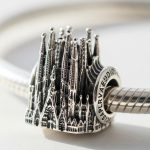Overview of Eco-Friendly Fabrics for Humid Summers
Choosing eco-friendly fabrics is crucial in hot and humid climates. These fabrics are not only gentle on the environment but also enhance comfort levels for the wearer. As temperatures rise, the last thing anyone wants is to feel sticky and uncomfortable in their clothes. This is where breathable materials come into play, offering a sustainable clothing option that aligns with environmental consciousness.
Eco-friendly fabrics contribute significantly to comfort by allowing air circulation and reducing the likelihood of overheating. This can make a world of difference, particularly during sweltering summer months.
Have you seen this : Rising stars: the most popular non-invasive facial lifting techniques favored by uk women
Sustainable clothing choices offer numerous health and environmental benefits. By choosing eco-friendly materials, individuals can minimise their carbon footprint, reduce exposure to harmful chemicals, and conserve water. Furthermore, these fabrics often require fewer resources to produce, helping to sustain natural ecosystems.
Thus, incorporating breathable materials into one’s wardrobe is not only a personal decision but a step towards a more sustainable future. Breathable fabrics help maintain an ideal body temperature, effectively contributing to the wearer’s overall well-being during sunny, humid days. Opting for sustainable clothing transforms one’s fashion choices into a statement of environmental responsibility that resonates beyond personal comfort.
Topic to read : Essential natural oils to nourish and revive your dry cuticles
Key Properties of Eco-Friendly Fabrics
When considering eco-friendly fabrics for summer, understanding their key properties is vital. Breathability is the first critical attribute. In hot weather, breathable fabrics allow air circulation, releasing body heat and enhancing comfort. This prevents overheating, making fabrics like linen, organic cotton, and hemp ideal choices.
Another essential property is moisture-wicking technology. This function draws sweat away from the skin, ensuring dryness and cooling the body, even on the hottest days. It encourages comfort by quickly absorbing and dispersing moisture, reducing the sticky feeling often associated with humidity. Fabrics like Tencel and certain recycled polyester offerings excel in this area, providing both breathability and moisture management.
Together, these fabric properties create a more pleasant wearing experience during humid summer months. Selecting materials with these features can result in clothing that supports comfort and ease while adhering to eco-friendly values. Understanding these benefits helps consumers make informed decisions about their summer wardrobe, focusing on both personal wellbeing and environmental impact. As eco-friendly fabrics continue to advance, prioritising breathability and moisture-wicking features highlights their practicality and appeal in sustainable fashion.
Top Eco-Friendly Fabrics for Summer Comfort
Choosing the best eco-friendly fabrics can redefine comfort during hot months. Various materials stand out in a climate where staying cool is a paramount concern.
Organic Cotton
Known for softness and breathability, organic cotton is a summer favourite. Unlike its conventional counterpart, it avoids harmful pesticides, yielding a sustainable option. Pairing lightweight organic cotton shirts with breezy skirts or shorts creates a relaxed summer ensemble.
Linen
Linen remains a top contender for humid climates. Highly breathable, this fabric offers superior airflow, easily wicking away moisture. Its production uses fewer resources, aligning with environmental goals. Embrace linen’s natural wrinkles for a stylish, laid-back look with loose trousers and airy blouses.
Tencel/Lyocell
An eco-friendly marvel, Tencel is crafted from sustainably harvested wood pulp. Its moisture management capabilities ensure sweat is efficiently absorbed and evaporated, providing all-day comfort. Try incorporating Tencel tank tops or dresses into your summer wardrobe for both function and flair.
Hemp
Hemp’s durability combined with its sustainability makes it an excellent choice for summer wear. Highly resistant to wear and tear, hemp offers longevity in fashion. Incorporate hemp T-shirts or shorts for a rugged yet comfortable style.
Recycled Polyester
Utilising recycled materials, this breathable fabric is often mistaken for virgin polyester but with a more environmentally friendly twist. Ideal for activewear, it maintains comfort without compromising sustainability. Look for recycled polyester in sports tops and leggings for optimal performance and minimal environmental impact.
Comparative Effectiveness of Fabrics in Humid Conditions
Navigating the complexities of fabric performance in humid conditions is key to selecting the best eco-friendly fabrics. To make informed choices, it’s helpful to compare how different materials perform in terms of breathability and moisture-wicking.
A comparative chart can effectively highlight fabric effectiveness. For instance, linen and organic cotton consistently rank high for their breathability, ensuring superior air circulation, which is crucial for maintaining comfort levels in high humidity. In terms of moisture-wicking, Tencel excels; its ability to manage sweat offers lasting dryness.
Understanding variable humidity levels is essential as some fabrics perform better depending on the climate specifics. Linen often shines in extremely humid conditions due to its ability to quickly wick away moisture. Conversely, recycled polyester might suit slightly cooler, less humid environments, offering good moisture control but slightly lower breathability than natural fibres.
Real-life testimonials provide further insights into fabric performance. Users often praise hemp for its durability and comfort in hot weather, while recycled polyester is noted for its usefulness in activewear. These firsthand accounts underscore the fabrics’ practical applications, aiding consumers in selecting materials that enhance their wardrobe’s sustainability and comfort quotient.
Practical Tips for Selecting Eco-Friendly Fabrics
Navigating through various eco-friendly fabrics options can be an enlightening experience for the eco-conscious shopper. When stepping into the realm of sustainable shopping, understanding how to identify sustainable clothing is crucial. Here are some quick tips to guide you.
Start by examining fabric labels. Look out for sustainability certifications such as Global Organic Textile Standard (GOTS) or OEKO-TEX, which ensure the fabric meets strict environmental and safety standards. These certifications are useful indicators pointing towards responsibly sourced materials.
Another practical step is to research and target ethical brands renowned for producing summer fabrics under fair labour practices and eco-friendly processes. Brands that are transparent about their supply chains typically offer more sustainable choices.
Make use of a checklist to navigate through stores, focusing on characteristics like breathability and material sourcing. Key questions to ask include: Is the fabric made from natural or recycled materials? Does it employ moisture-wicking technology for enhanced comfort in hot weather?
Finally, consider joining online communities focused on ethical fashion. They can provide real-life feedback and recommendations, offering a broader insight into best eco-friendly fabrics and their practical applications in summer wardrobe planning.
Pros and Cons of Different Eco-Friendly Fabrics
Making informed eco-friendly choices involves weighing the pros and cons of each fabric type. Each material offers unique benefits and challenges that may affect your decision-making process.
Organic Cotton: This fabric is lauded for its softness and breathability, making it ideal for hot weather clothing. However, it may require more water to cultivate than other materials, potentially impacting local resources.
Linen: Known for its breathability and sustainability, linen provides excellent cooling. Its natural wrinkling can be seen as a pro for relaxed style but a con for those preferring polished looks.
Tencel/Lyocell: Providing top-notch moisture management and eco-friendliness, Tencel is incredibly comfortable. A downside might be its higher cost compared to other fabrics, which might not suit all budgets.
Hemp: With exceptional durability and minimal environmental impact, hemp is perfect for those seeking long-lasting options. The rougher texture can be a downside for some, affecting comfort preferences.
Recycled Polyester: Known for reuse of materials, maintaining breathability similar to virgin polyester. However, its synthetic nature may not appeal to individuals preferring natural products.
Choosing the right fabric depends on personal needs, climate, and style preferences. Understanding these fabric advantages and disadvantages will guide you towards the best eco-friendly choices for your wardrobe.
Conclusion with Outfit Ideas
Creating summer outfits by combining the right eco-friendly fabrics can lead to both functional and stylish results. Using eco-friendly fashion, you can mix materials for optimal comfort and style.
Consider pairing a linen blouse with hemp shorts for a breathable, laid-back style that keeps you cool. This combination offers excellent airflow and moisture management, perfect for hot days. Or opt for a Tencel dress, which manages sweat efficiently while providing a touch of elegance.
Recycled polyester activewear can be ideal for morning jogs or yoga sessions, offering comfort and sustainability. Match a recycled polyester tank with organic cotton leggings for a mix of durability and comfort.
Create a seasonal lookbook showcasing these sustainable outfits for inspiration. For office settings, a structured organic cotton shirt paired with linen trousers can maintain professionalism while offering breathability.
With these creative combinations, you can explore various styles that embrace sustainability, showcasing the beauty and practicality of eco-friendly fashion. By making informed and thoughtful clothing choices, you are adopting eco-friendly practices that reflect personal style and environmental responsibility.
Ultimately, these styling ideas encourage one to explore and incorporate sustainable clothing, enhancing both comfort and environmental impact awareness in daily wardrobe selections.





















